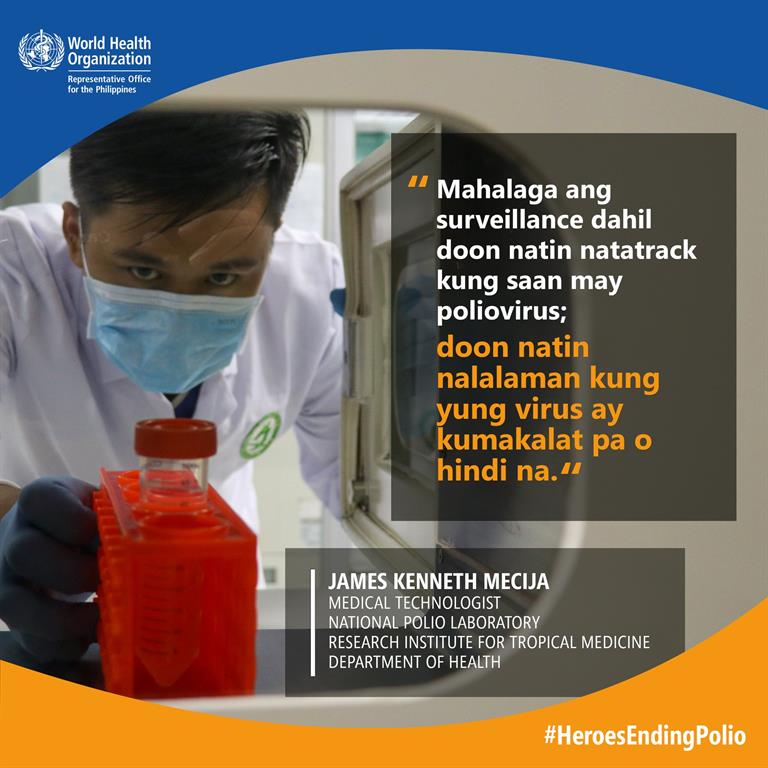While some #HeroesEndingPolio helps vaccinate children in communities, others wear laboratory coats and test samples for polioviruses.
James is part of the National Polio Laboratory at Research Institute for Tropical Medicine, where he confirms the presence of polioviruses in samples from sewage and waterways. He shares with us how he has been with his work:
“I’ve been working as a medical technologist for the National Polio Laboratory for two years. This is my first job after passing the board exams. At the moment, I am the one who processes environmental samples for polio surveillance, from receiving the samples to virus isolation.
Before the [polio] outbreak, I was still able to relax a bit because there were just a few samples. But now, it’s more stressful because of the increasing number of samples. I now have to manage my time well. I have to process the samples accurately because the results are very critical at a time like this. That’s why we are really very focused and meticulous in what we are doing.
When it first came out that we had a positive sample for polio, we became nervous. When the second positive sample came from the same site, we got sad because it meant that the virus was already spreading there.
We have an important role in monitoring the spread of diseases. Surveillance is important because it allows us to track where the poliovirus is, and whether the virus continues to spread or not.
To the public, let’s cooperate with our health workers now that there is ongoing [polio] immunization and surveillance. By doing so, we can help stop the [polio] outbreak in the country.”


